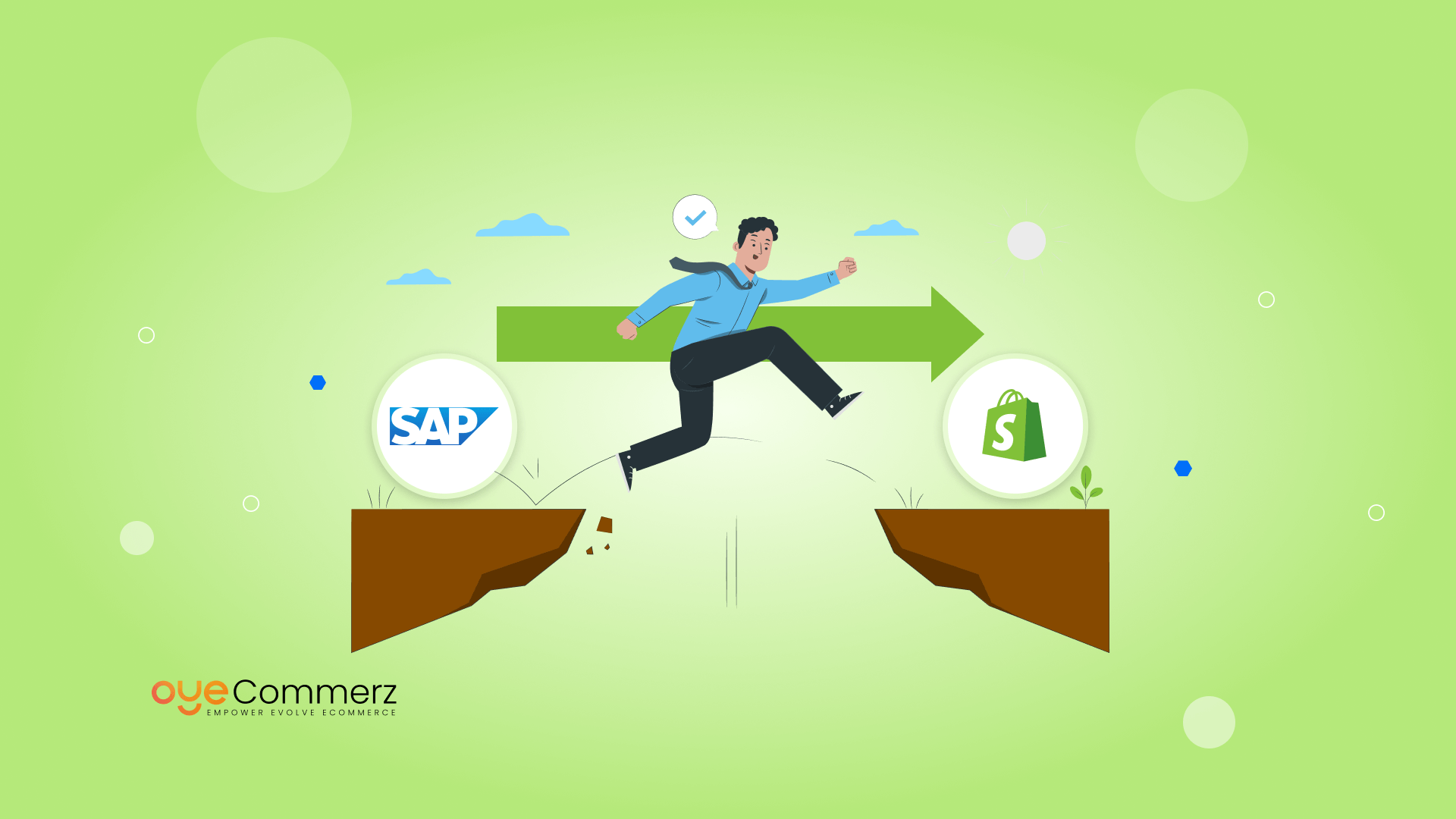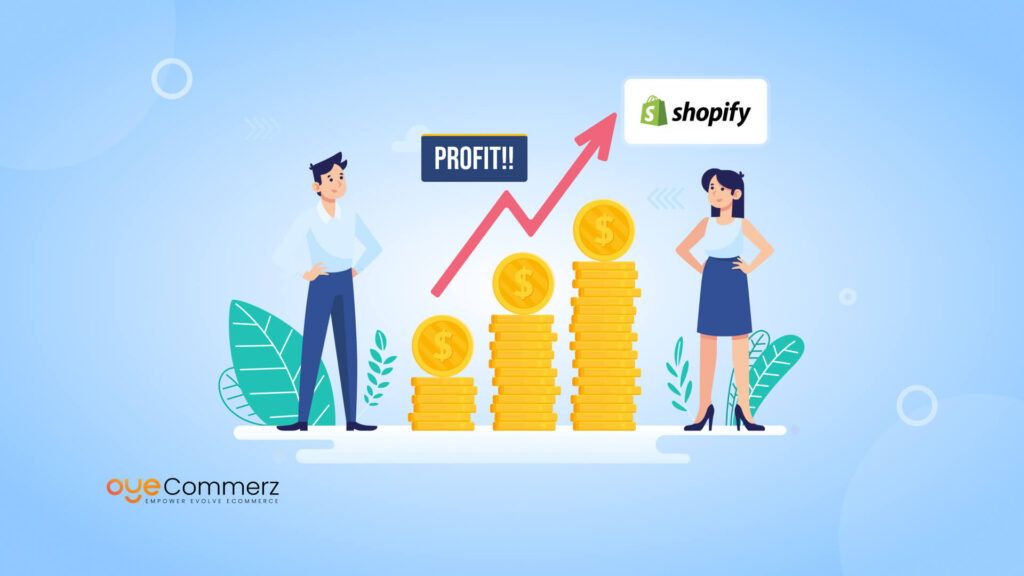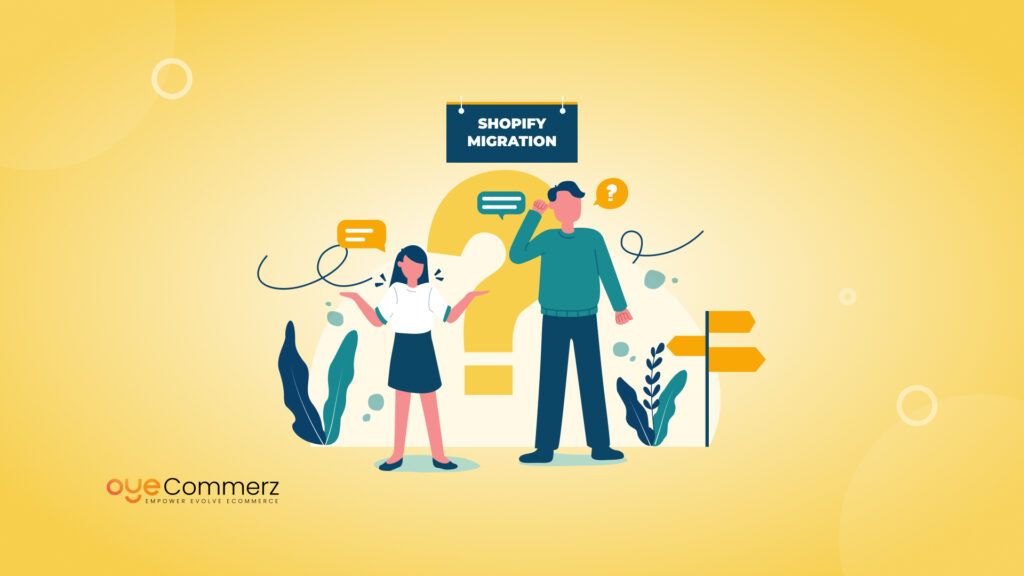Thinking about moving from SAP Commerce Cloud to Shopify but unsure of the hurdles ahead? You’re not alone. Many modern business owners face common challenges during this migration, from data compatibility issues to ensuring a seamless customer experience. But here’s the good news: businesses that make the switch often report up to 40% faster deployment times and significant cost savings. In this blog, we’ll walk you through the typical obstacles, why they happen, and how to overcome them with confidence. Whether you’re worried about downtime, integrations, or preserving your brand’s unique identity, we’ve got practical insights to make your transition as smooth as possible. Let’s get started!
Table of Contents
ToggleSAP Commerce Cloud vs. Shopify
The following is an elaborate concept of SAP Commerce Cloud and Shopify aimed at understanding the core issues obtaining the migration process.
1. Architecture and Customization
SAP Commerce Cloud is specially designed for companies that require high levels of Customization and flexibility. It makes it possible to design advanced and individualized scenarios for enterprises and to integrate smoothly with other fourth-tier applications such as ERP, CRM, and payment processing engines. As will be seen in the following sections, this platform is well designed for both B2B and B2C business models with both generally applicable but also very specifically customized processes and settings.
This makes Shopify more scalable in the sense that it is designed for easy-to-use and fast setup. Shopify is highly suitable for small and medium businesses or enterprises with a turnkey solution as it doesn’t require too much customization to implement. However, this simplicity is carried out at the expense of flexibility when compared to SAP Commerce Cloud. Shopify integration list is rather vast when it comes to third-party applications and APIs, still, if you want to make detailed changes, Shopify API development is needed.
2. Cost Structure
With the pricing model of SAP Commerce Cloud being licensing fees, it also entails the acquisition of additional infrastructure and the hiring of dedicated development teams. It’s a high-cost solution best appropriate for large enterprises that have relatively complicated needs. On the other hand, it has more straightforward subscription pricing, making it more affordable for businesses that want to cut their operating expenses but still have the opportunity to grow massively. The latter eliminates the necessity to hire a specialist to work on a custom design, while the former is more suitable for companies planning to save money for maintenance.
3. Time to Market
SAP Commerce Cloud projects take from a few months to a year and more to go live because of the platform nature and requirement of lots of customizations. On the other hand, Shopify is fast with the setup; a business can have a store up and running within a few weeks. This is a significant area of interest when companies are searching for a quicker time to market or those concept development cycles that are shorter.
Challenges in SAP Commerce Cloud to Shopify Migration
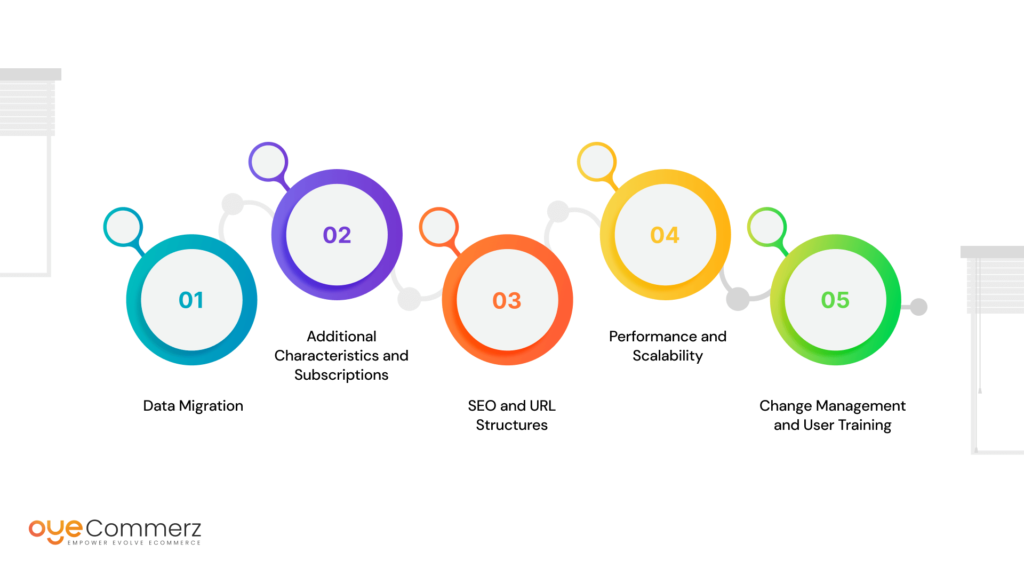
Converting from SAP Commerce Cloud to Shopify has its advantages but, at the same time, has numerous issues that must be considered.
1. Data Migration
SAP Commerce Cloud is designed to handle virtually limitless volumes of data such as multiple-tiered product configurations, customer details, prior orders, and multiple price structures. Transferring this data to Shopify has its challenges since data storage does not follow the same structures as the original system. SAP Commerce has a better and more complex ability to structure the products, with a multi-hierarchical structure, bundled products, and an increased number of attributes compared to Shopify.
2. Additional Characteristics and Subscriptions
Another major benefit of SAP Commerce Cloud is it has provision for unique functionalities like distinctive checkout methods, specific workflow, and pricing strategies. Porting these features to Shopify may be cumbersome as Shopify has inherent functionality that may not accommodate these features right off the bat. Another drawback very specific to a lot of companies is that many applications integrate with the ERP, CRM, or third-party logistics system and those may not be easily migrated to Shopify.
3. SEO and URL Structures
SEO is an essential factor for any eCommerce business and shifting from the SAP Commerce Cloud to Shopify can negatively impact your SEO. SAP Commerce Cloud has a lot of freedom when it comes to the usage of URLs; Shopify has predefined fields. The problem can be seen when URL mapping is incorrect or when there are no redirects at all which leads to broken links, less traffic and lower search engine rank.
4. Performance and Scalability
SAP Commerce Cloud is built to address heightened traffic volumes within the enterprise, it has performance and scalability capabilities. Another factor that may cause worry after transitioning to Shopify is how well you are prepared to deal with high traffic within your site or application during certain times of the year. Shopify has impressive architecture and can easily accommodate growth; however, businesses should check that their new environment can support their needs especially if the business was processing high transaction volumes and dealing with a large number of products.
5. Change Management and User Training
Which means that your team will need to learn how to use the new platform when you migrate there. In this sense, and concerning the mere user interface, Shopify might be less complex than SAP Commerce Cloud – although there will still be an adaptation period for companies used to less standardized platforms. Further, due to Shopify pre-set requirements, it might be necessary to change business processes to fit the program, which can also call for dramatic change management.
Similar Read: A Comprehensive Guide to Migrating from SAP Commerce Cloud to Shopify
Post-Migration Support and Ongoing Optimization
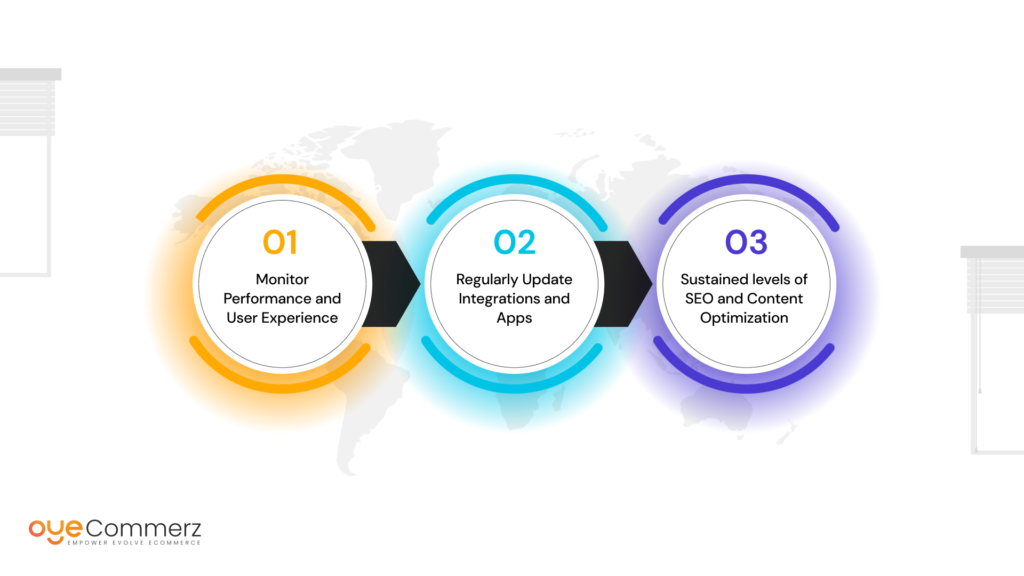
Migration does not complete once you launch your new Shopify store. Continual maintenance is also important to resolve any arising problems, besides putting other measures to enhance the platform after the migration phase.
1. Monitor Performance and User Experience
Become accustomed to providing constant feedback of your Shopify store to determine whether it is sufficient for your business. We must scan it for any exhausted links, discordance in the data, or analysis lag. It is always important to aim at achieving the highest possible page loading speed and maximum uptime if your store is popular.
2. Regularly Update Integrations and Apps
As we have seen, Shopify is constantly changing, and your integrations and your apps must grow along with it. It is always good to update in a routine to use the upgraded functions and securities, and there is a possibility of encountering some incompatibilities with new Shopify upgrade. You should always check your app space to see whether more efficient solutions are available.
3. Sustained levels of SEO and Content Optimization
After their migration, let’s monitor our SEO activity and the performance of the website and/or application. Carry on with the search engine optimization from within Shopify to keep on making improvements to the site. SEO should be checked and modified periodically, so your site remains higher in the list. It is suggested that content optimization must be conducted as a continuous process to keep your site most competitive.
Tips To Remember
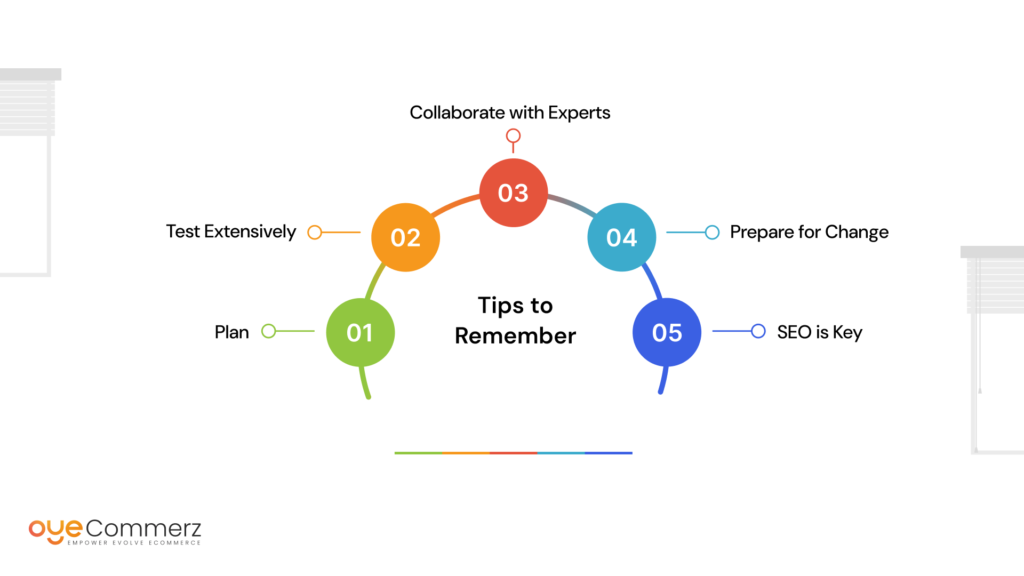
Plan: The best way to start the migration process is when there is a clear plan that will help to prevent shockers.
Test Extensively: While still using the current system perform some tests on a staging database to check for problems that may arise.
Collaborate with Experts: Coordination with migration professionals guarantees proper handling of nuanced issues to avoid the development of expensive mistakes.
Prepare for Change: Ensure that your team is trained and that the change management process is done right to avoid possible interruptions of business.
SEO is Key: This is why search engine optimization should not be overlooked in the course of and after migration.
Make the Leap from SAP Commerce Cloud to Shopify with OyeCommerz!
At OyeCommerz, we specialize in seamless eCommerce migrations that preserve data integrity, custom features, and SEO rankings. Our team of experts handles everything from complex integrations to post-migration support, ensuring your business stays operational throughout the transition. Don’t let technical hurdles hold you back trust us to deliver a smooth, hassle-free migration that sets your store up for success on Shopify.
Contact us now for a free consultation and start your migration journey with confidence!
Contact to Migrate your Site to Shopify Now
Conclusion
Migrating from SAP Commerce Cloud to Shopify presents many technical and operational challenges, but with proper planning and execution, it can significantly enhance your business’s eCommerce capabilities. Understanding the differences between the two platforms and addressing pain points like data migration, custom features, and SEO will ensure a smooth transition. Once migrated, continuous optimization and support will help your business thrive on Shopify’s user-friendly and scalable platform. With the right strategy, this migration can empower your business to stay agile and competitive in the dynamic world of digital commerce.

